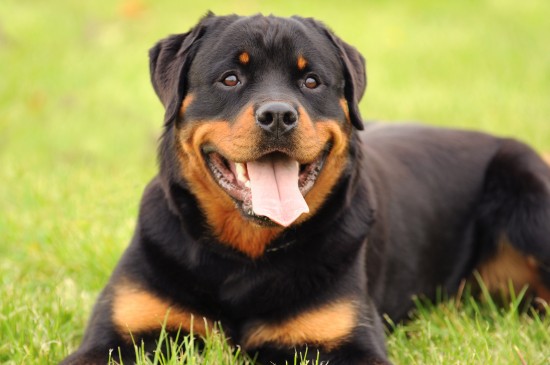

Osteochondritis dissecans (OD) is a condition that occurs during the periods when the joints of the dog are growing, as part of the process that causes cartilage to become replaced by bone growth. This is known as endochondral ossification, and is a normal part of bone development. However, if this process does not happen properly, the cartilage in the affected area will continue to grow also, which affects the production of synovial fluid, the material that provides lubrication and nutrients to the bones and joints. This leads to the condition known as osteochondritis dissecans, which can occur in any joint of the body, but is most commonly found in the shoulders.
Affected dogs may show signs of pain when moving around normally, and particularly when getting up and lying down.
While the exact causes of osteochondritis dissecans are not fully understood, it is thought that a combination of genetic traits and external factors are involved. Some large and giant breeds of dog appear to be at particular risk of developing the condition, possibly due to the rapid and significant joint and bone growth process that these larger dogs go through when compared to other breeds.
If you own a large or giant breed dog, it is a good idea to develop a basic understanding of osteochondritis dissecans, and the risk factors for the condition plus what can be done about it.
Read on to find out more.
While OD almost certainly has a significant genetic element to its development, environmental factors can also contribute to the development of the condition.
Joint damage, injuries and traumas while the dog is still young can contribute to the development of the condition, as can feeding an overly rich or high-calorie diet to growing puppies. At the end of the day, any large or giant breed dog can potentially develop OD, and you should keep a special eye on them when they are going through a particularly rapid growth spurt.
Some of the breeds that are known to be particularly prone to the condition include:
The onset of osteochondritis dissecans will present differently in different dogs, and can appear either gradual or sudden in onset. It will also vary from dog to dog where in the body they appear to be affected, and the condition may affect several joints at the same time, or possibly just one.
One of the most obvious times that owners can tell there may be a problem is after exercise, if the dog begins to limp or slow down inexplicably, but appears to be ok at other times. If only one limb is affected, this can of course cause the dog to limp favouring that specific leg, but if two or more legs are affected, obvious limping may not be visible, as the dog will not have a “better” leg to take the weight.
You may also notice inflammation or heat at the site of affected joints, possibly accompanied by swelling. It can be painful for the dog to undergo examination of the joints in question, and so pain or snapping when attempting to touch or manipulate the limb in question should be regarded as another symptom.
When your vet examines your dog, if they do suspect that the dog is suffering from osteochondritis dissecans, they might refer your dog to a specialist orthopaedic clinic for a definitive diagnosis and treatment.
There are a great many different approaches to treating osteochondritis dissecans in dogs, and generally, more than one of them will be used to tackle the issue. First and foremost, resting the affected limbs or joints is necessary, and you should consult closely with your vet to discuss potential dietary changes to ensure that your dog’s diet is a good fit for their size and lifestyle, and not contributing to the problem.
Your vet may also recommend some joint-supporting supplements, such as chondroitin and glucosamine. Hopefully, you should begin to see some improvement after a couple of months of treatment, but if these measures prove ineffective or the cartilage present has mineralised and turned hard, x-ray analysis and surgery may be necessary.
After effective treatment and when the dog is out of the woods in terms of the future growth spurts that come with age, dogs affected with the condition can usually return to normal and not be affected by the effects of the condition in later life.
Responsible breeders of large and giant breed dogs will keep records of the presence or absence of the condition within their breed lines, and selectively breed their dogs to try to eradicate its presence from their lines.
If you are considering buying one of the breeds of dog that are particularly prone to the condition, chat to your breeder about the condition before you arrange to make a purchase, and find out what, if anything, they are doing to minimise the occurrence rate of the condition.
Copyright © 2005-2016 Pet Information All Rights Reserved
Contact us: www162date@outlook.com